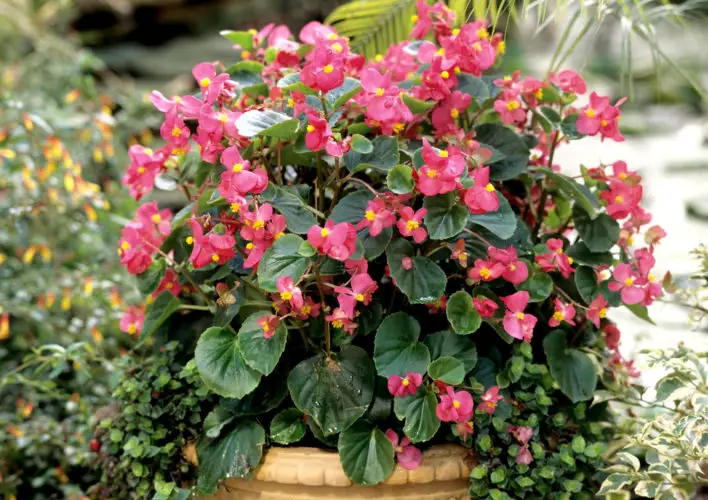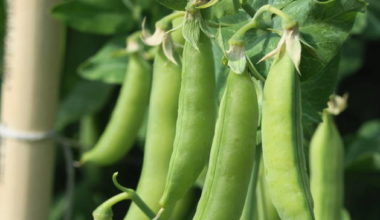Begonia is prized for the diversity and beauty of its foliage and flowers. Its taste for subdued situations and warmth makes it ideal for indoor cultivation, as long as it is watered and fertilized regularly.
Easily grown in pots or in the ground, the begonia is an ideal flowering plant to bring color to a garden or an interior!
Contents
Planting the begonia in pot
Where to plant potted begonias?
Potted begonias like a bright exposure, but without direct sun. Begonias with large flowers need more light than those with striking foliage.
Temperature for potted begonias
During the begonia’s growing and flowering period, maintain a temperature between 64 and 73°F. For those that observe a rest period (often after flowering), place in a cooler room, around 59-61°F.
When to plant the potted begonia?
Repotting Begonia is done in early spring when the roots have colonized the entire pot.
Planting and cultivation of the begonia in pot
The begonia can be planted in a pot, in a window box or in a bed among other summer flowering bulbs. It is a hardy plant which supports well the low temperatures, but not the frost. Begonia likes to take its time to develop. It is best to start your seedlings in January for transplanting in March or April and planting in May after the last frosts.
For planting, choose a semi-shaded location with moist, humus-rich soil. The soil must also be well drained to avoid diseases linked to humidity or rot. Tuberous begonias prefer a fully shaded area. Purple-leafed begonias do best in a sunny spot.
Maintain a spacing of about 4 to 6 inches between plants and make sure to water regularly. It is possible to combine it with other plants such as lantanas or cannas when planting.
The tuberous begonia is also a very beautiful houseplant. Planted in a pot, it brings color to a room with yellow, orange, red or pink begonia flowers. Indoors, make sure to bring light to your begonia while avoiding direct sunlight.
Maintenance of potted begonia
Good news for lazy gardeners: once its flowers have bloomed, the begonia plant requires little maintenance! Twice-weekly watering and twice-monthly application of flowering plant fertilizer is all that is needed.
Do not spray your begonias with water, as this encourages the appearance of powdery mildew. During the flowering period, watering should be reduced, but make sure that the substrate remains moist.
Also make sure to remove the faded flowers as you go along to enjoy a long blooming period.
In winter, it is advisable to cover perennial begonias with dried leaves or plant mulch and to bring in the tubers of annual begonias in a cool, airy place, like the garage. After the tuber has dried, place it in sand until the end of the winter season. Also pinch out young plants to give them a compact habit.
For indoor begonias, be aware that it is a plant that needs a lot of natural light. However, it fears direct sunlight. Ideally, install it on a windowsill with an eastern or western exposure.
In the front or in the garden
Begonias are used as houseplants in pots. They also make beautiful garden subjects in frost-free climates. They are especially the providence of flowered facades in suspensions.
For a lush effect, combine begonias with cannas, lantanas, hedychiums with exotic flowers and green foliage that accentuate the desired effect. Adapt the uses according to the different habits of the begonia. Some species are rather drooping and therefore perfect for hanging, while others have an upright habit that would be better suited to a bed or a pot.
Diseases and parasites of begonia in pot
In a garden, the begonia is known to have 3 main enemies:
Slugs, which are particularly fond of rhizomatous begonias. To prevent them from nibbling them, install beer traps or barriers of ash and/or eggshells near your plants.
Powdery mildew and botrytis, diseases that are often caused by excess moisture, and that you can prevent by investing in a special fungicide at the garden center. It is highly recommended to burn the affected parts of the begonia to avoid the spread of the disease to your other plants.
Multiplication of Begonia
It is possible to multiply begonia plants, either by dividing the tuber in early spring, taking care that at least one bud per piece remains, or by taking cuttings from the stems in early summer.








